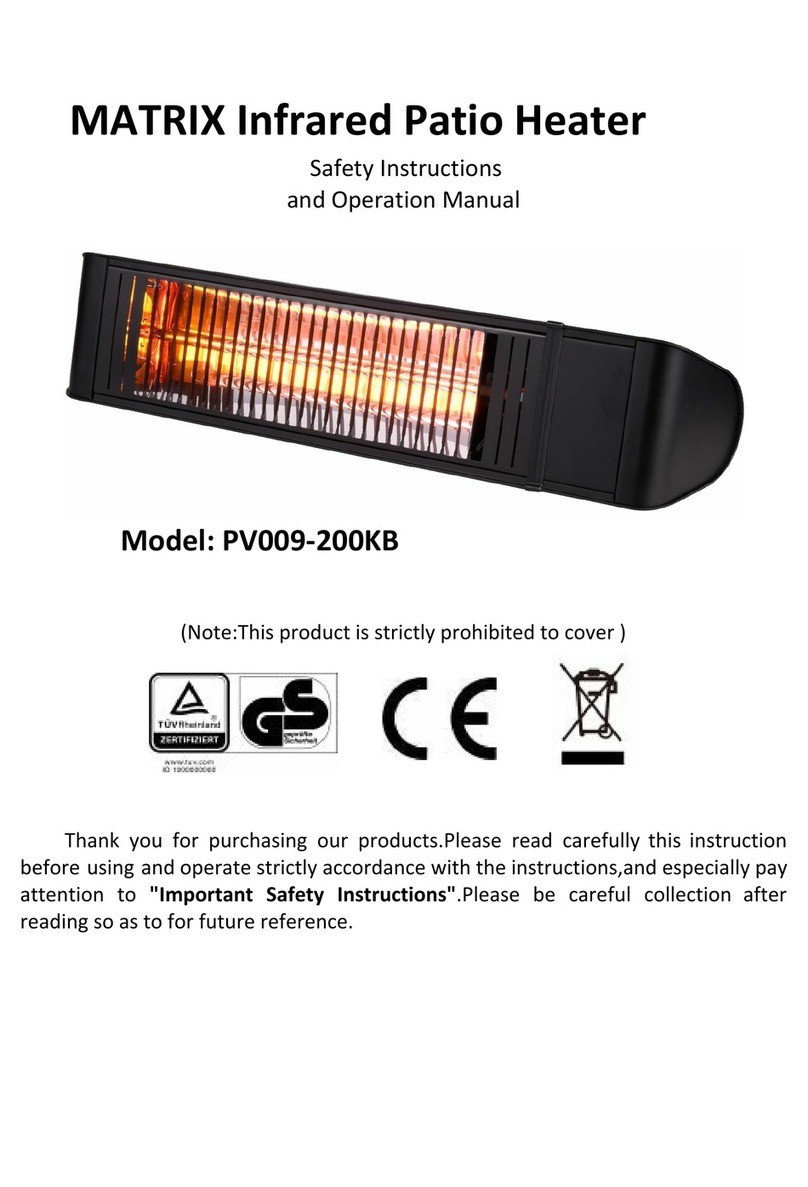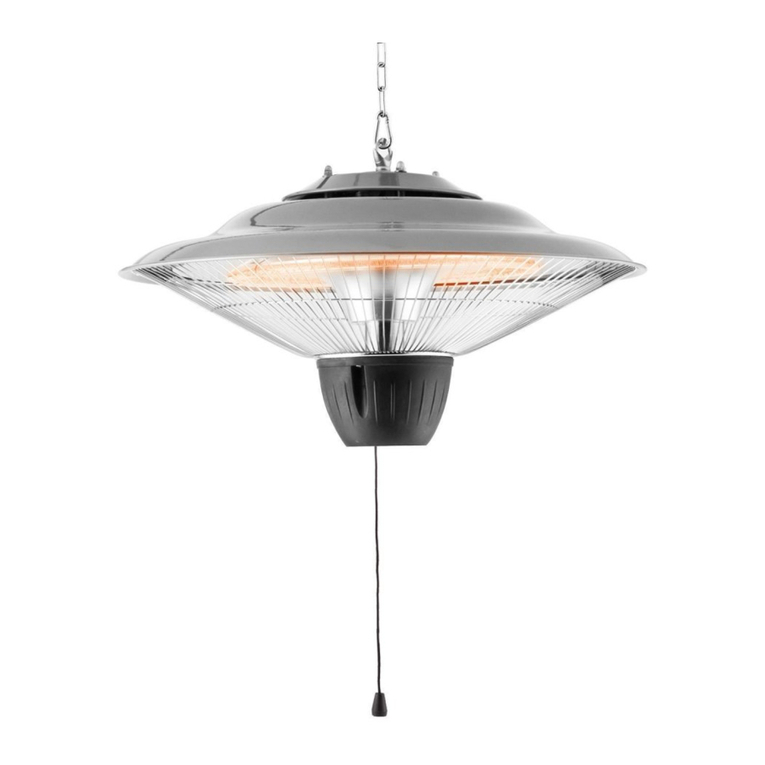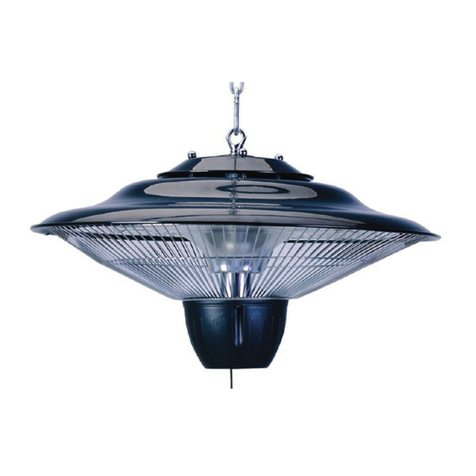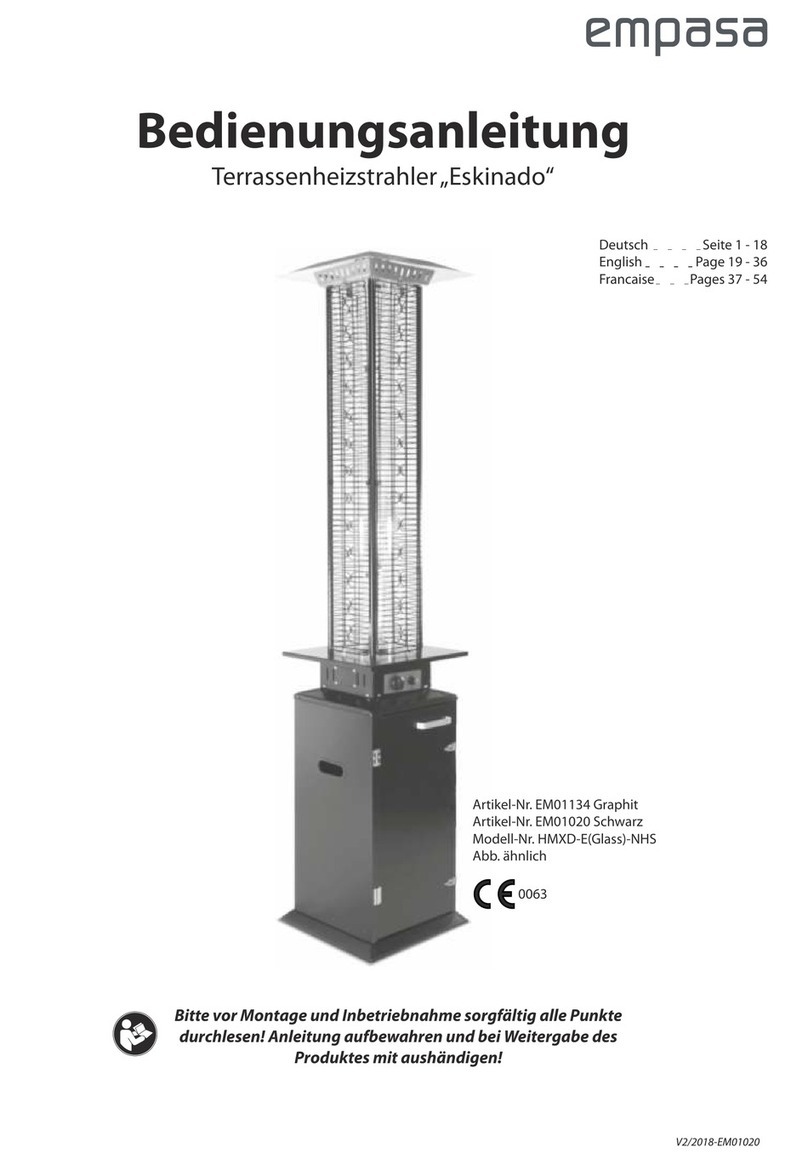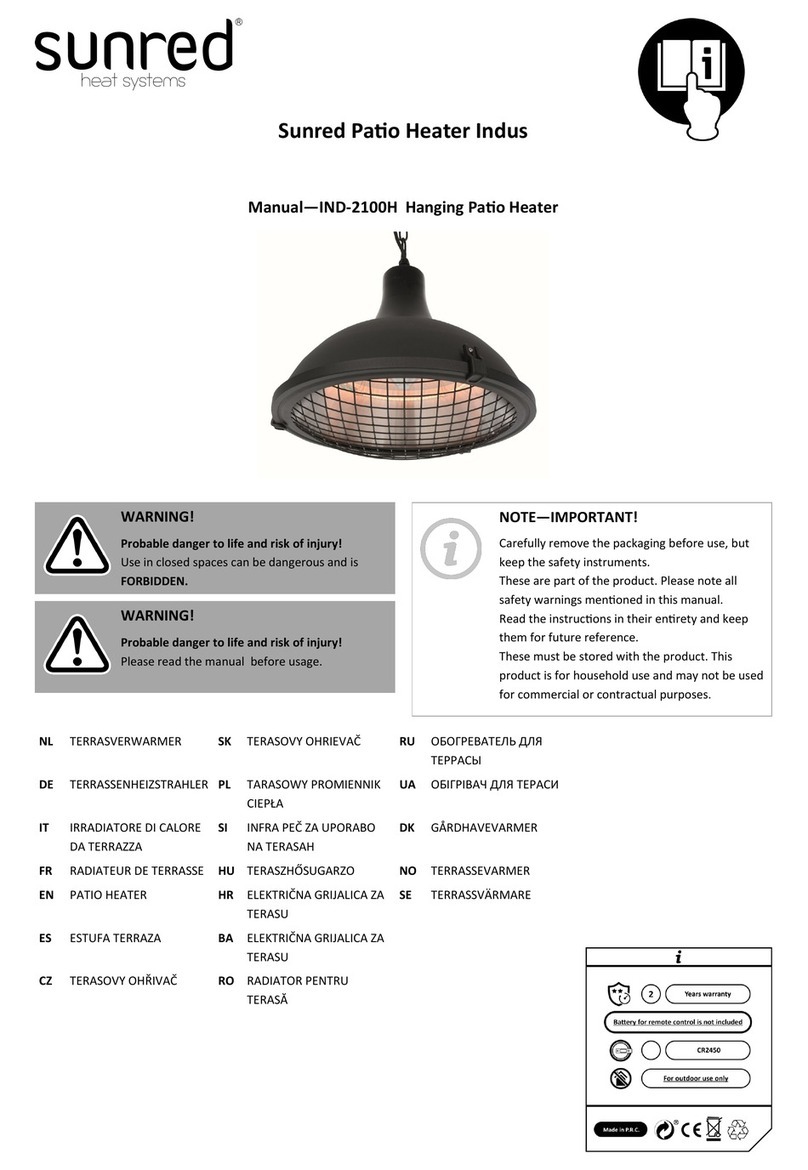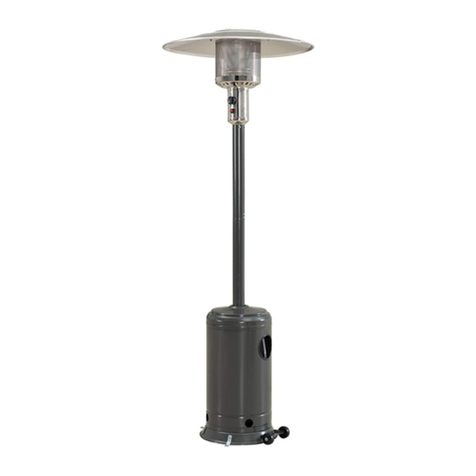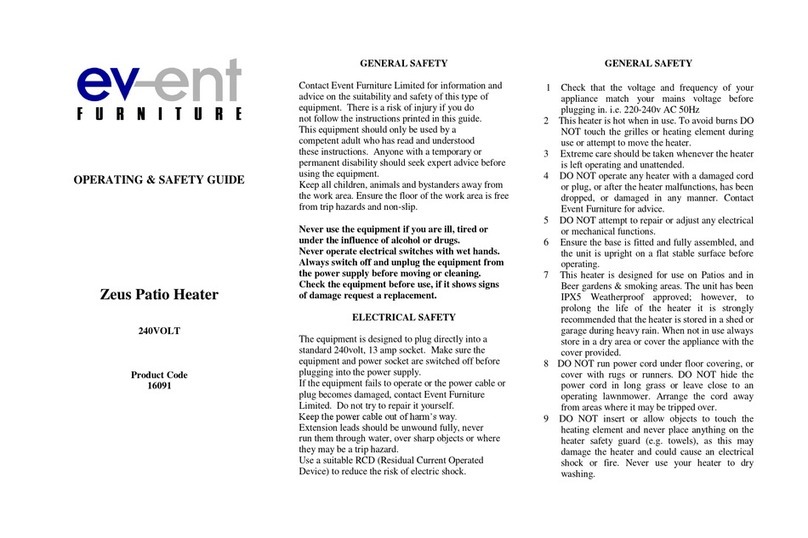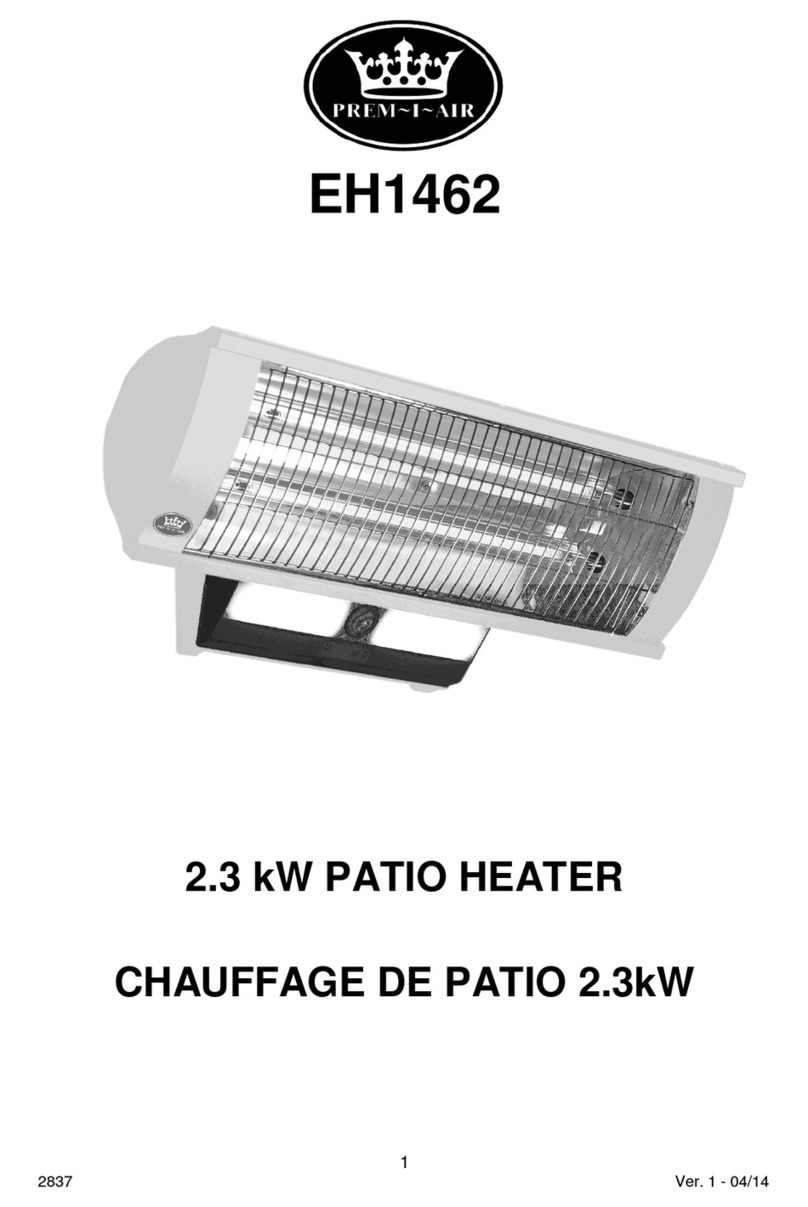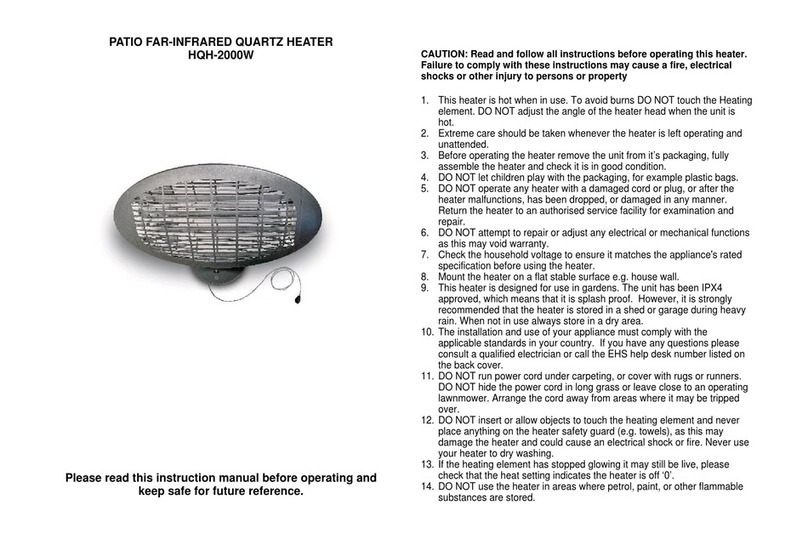
3
SAFETY AND WARNINGS
zBegin by insuring proper installation and servicing. Follow the installation instructions
provided with this product. Have your heater installed by a qualified technician. Have
the installer show you where the gas supply shut off valve is located so that you know
where to shut off the gas to the heater. If you smell gas, your installer has not done
a proper job of checking for leaks. If the connections are not perfectly seated and
tightened, you can have a small leak and therefore a faint gas smell. Finding a leak
is not a “do-it-yourself” procedure. Some leaks can only be found with the heater
in operation mode and for your protection it must be done by a qualified service
technician. Never use an open flame to locate leak.
zClean the heater with caution. Avoid steam burns; do not use a wet sponge or cloth to
clean the heater while it is hot. Some cleaners produce noxious fumes or can ignite if
applied to a hot surface.
zBe sure all heater controls are turned off and the heater is cool before using any type
of aerosol cleaner on or around the heater. The chemical that produces the spraying
action could, in the presence of heat, ignite or cause metal parts to corrode.
zDo not operate the heater under unprotected combustible construction, maintain
clearances. Use only in well
ventilated areas.
zKeep the area surrounding the heater free from combustible materials, trash, or
combustible fluids and vapors such as gasoline or charcoal lighter fluid. Do not obstruct
the flow of combustion and ventilation air.
zTo avoid the risk of burns or accidental cloth ignition, do not touch the heater anywhere
near the burner
assembly during operation.
zDo not touch the burner assembly until after the heater has cooled.
zCarefully monitor young children in the vicinity of any operating heater. Do not hang
clothing or any other flammable materials from, on, or near the heater.
zAll leak tests should be done with a soap solution. Matches should never be used
for this purpose.
zThis outdoor heater is primarily used for temporary heating of outdoor patios, decks,
spa and pool area, and work areas. Turn heater off when leaving the area. Do not allow
heater to operate unattended.
zIf the heater is used in locations where storage of combustible materials is allowed, a
sign must be posted in a conspicuous location specifying the maximum stacking height
in order to maintain the required clearance to combustible materials.
zrecommendations on hook-up to gas supply:
zA manual valve must be installed external to the appliance, in an accessible location
from the front for the purpose of shutting off the gas supply. The supply line must not
protrude beyond the back of the unit. Make sure the gas supply is turned off at the wall
valve before connecting the appliance.
zThe gas supply connections should be made by a qualified technician and in
accordance with local codes or ordinances. In the absence of a local code, the
installation must conform to the National Fuel Gas Code ANSI Z223.1.
zNOTE: This product must be installed by a licensed plumber or gas fitter when installed
within the Commonwealth of Massachusetts.


